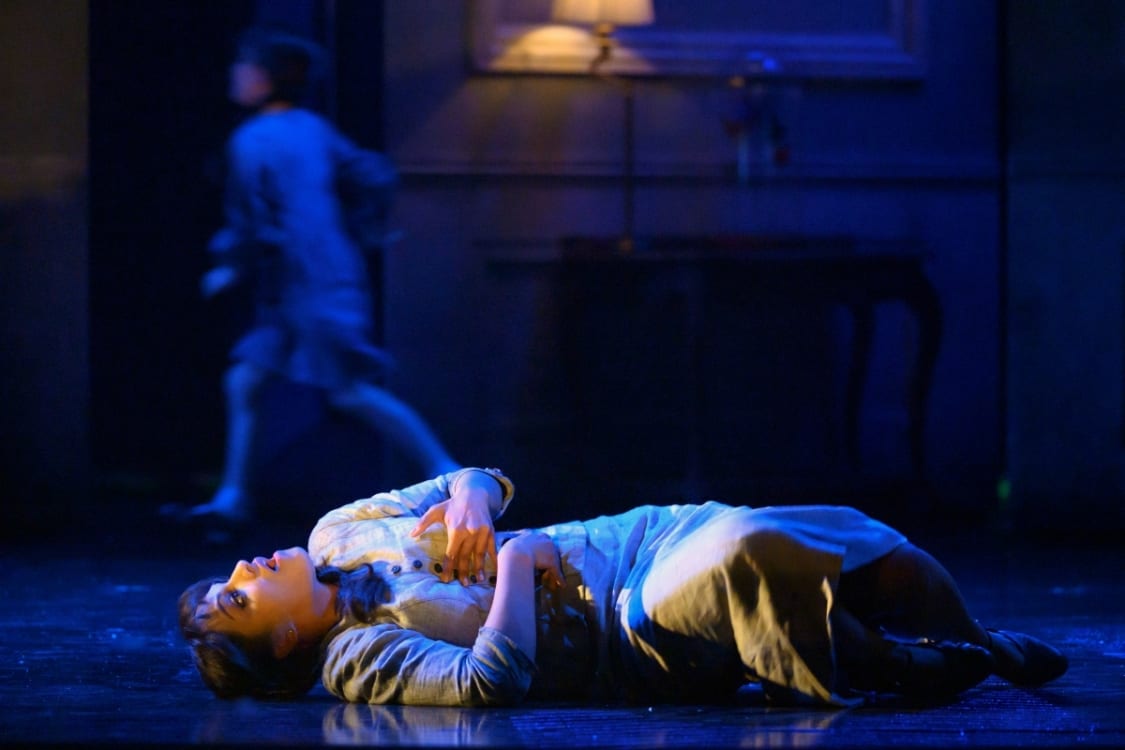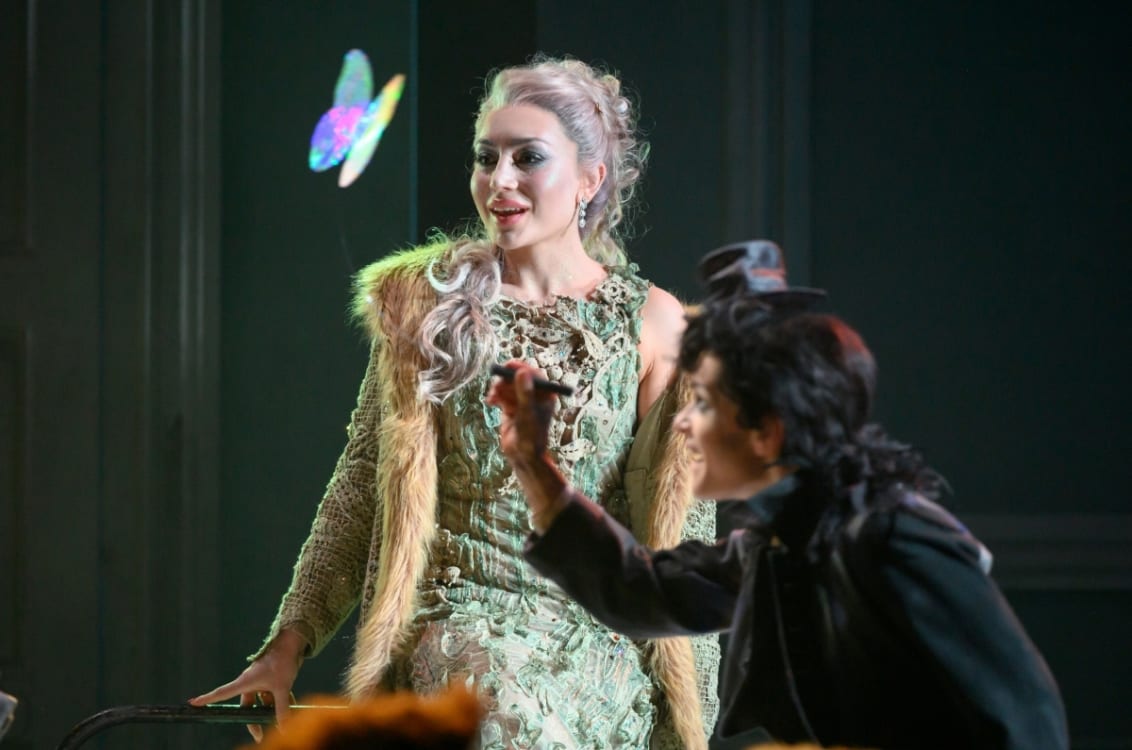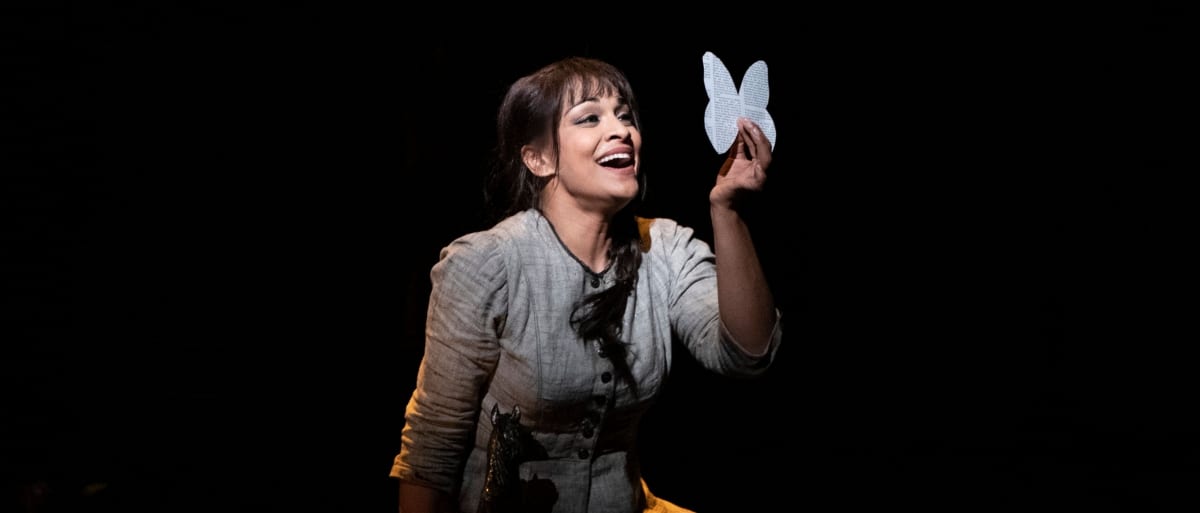Cendrillon is Jules Massenet’s late nineteenth-century version of the Cinderella story, which takes the gist of the familiar fairy story while moving it on in directions typical of the later Romantic era. On the one hand, it explores darker territory than usual, as Cinderella contemplates suicide after the abrupt end of her outing with Prince Charming and apparent return to drudgery. On the other, the composer uses the full resources of post-Wagnerian harmony and orchestration to deck out the familiar lines of the story with self-consciously magical effects. This is a delightfully wistful, wry, and sometimes exotic re-telling of the story, which should be heard far more often in the opera house, offering, as it does, a refreshing contrast to the cruder comic lines of Rossini’s version, which we see far more frequently.
This kind of aesthetic, prioritising fairy magic, is ideally suited to Glyndebourne’s Arcadian setting where it joins operas such as Falstaff and A Midsummer Night’s Dream in feeling entirely at home; and indeed it is in the magical scenes that Fiona Shaw’s production excels. The fairy godmother, sung beautifully here, with perfectly spun coloratura lines, by Nina Minasyan, is attended by an acrobatic and gracefully agile contingent of fairies who achieve exceptional transitions between the everyday world and the world of fantasy, just as the music suggests. They are assisted by inventive costume and set design which shows off the collective skills and creative flair of Glyndebourne’s backstage team to memorable effect. In particular the transformation of Cinderella from housemaid to ballroom belle was artfully achieved in – apparently – a single clothing carrier; and the elaborate illusionism and glassy spectacle of the ballroom was deftly displayed through reflecting prismatic columns that revolved.

However, elsewhere Shaw’s whimsical eccentricities moved from charm through to a serious blurring and confusion of the narrative line. Cinderella’s unappealing and selfish step-mother and step-sisters are turned into the most vulgar chavs, running quite counter to the text, which suggests that her father has re-married above himself into a family of self-consciously high lineage. Snobbery rather than high-camp vulgarity is what is required here: Lady Bracknell rather than Little Britain. That is to take away nothing from the excellent performances in these roles, but the representation is simply inapposite and inauthentic.
One has to say the same about the depiction of the key central relationship between Cinderella and Prince Charming, where Shaw introduces a confusing set of extraneous elements that make the plot hard to follow, seeking Freudian depths that are simply not present in this gossamer-textured work. As well as Cinderella herself, there two alter-egos; there are also two versions of Prince Charming taking their departure from the fact that this is essentially a ‘breeches’ role, sung here by Kate Lindsey. Here the prince appears to be a fantasy projection by Cinderella based on an oppressed servant-girl at home, who seems to share the burden of blame and insult habitually foisted on Cinders herself. However interpreted, the result is convoluted and perplexing; just the opposite of insightful.

Happily the strength of the central singing and acting performances and the superlative orchestral backdrop allows one to banish doubts most of the time. Danielle de Niese is truly in her element in the title role, as much soulful as soaring, and fully up to the demanding physical aspects of the part. She manages to strike the right balance between wide-eyed, innocent, naivety and simplistic sentimentality. There are a lot of duets in this opera, and it is notable how well she modulates her voice with those of Lindsey as the prince and Lionel Lhote, as her put-upon, but sympathetic father. The Glyndebourne Chorus has a lot to do throughout, including as an off-stage chorus, and all its interventions, whether powerful or delicate, are well calculated and immaculate.
In the pit John Wilson moves things along briskly but with a fine ear for instrumental and vocal balance. There are whole sections where essentially where one is listening to refined chamber music, with the voices in ‘vocalise’ style and selected instruments drawing the audience down into a an exquisite world of shimmering surfaces before bouncing back into grand opera panache and swagger. It is the mark of a fine and persuasive conductor that Wilson successfully coaxes the London Philharmonic in and out of these extreme dynamic contrasts. One hopes to see more of him at Glyndebourne in future, in mainstream opera as much as in the musical theatre repertory where he has such an established reputation.
The musical and visual aspects of this production are an absolute delight, and it would certainly rate five stars ordinarily, but for the wayward excesses of the director, who cannot leave a simple story to play itself out.

